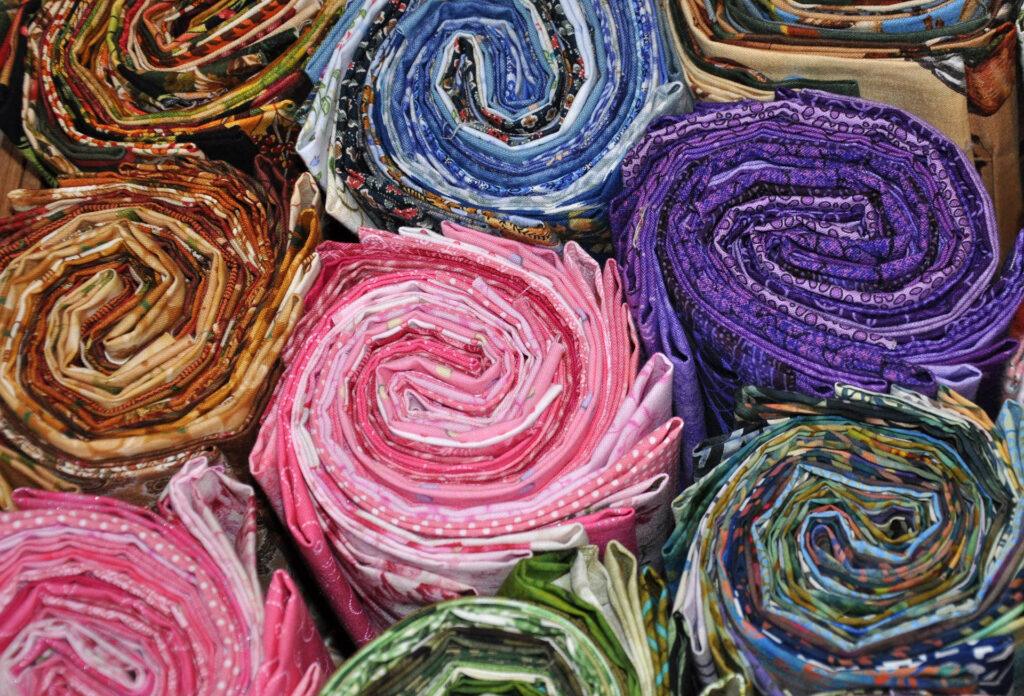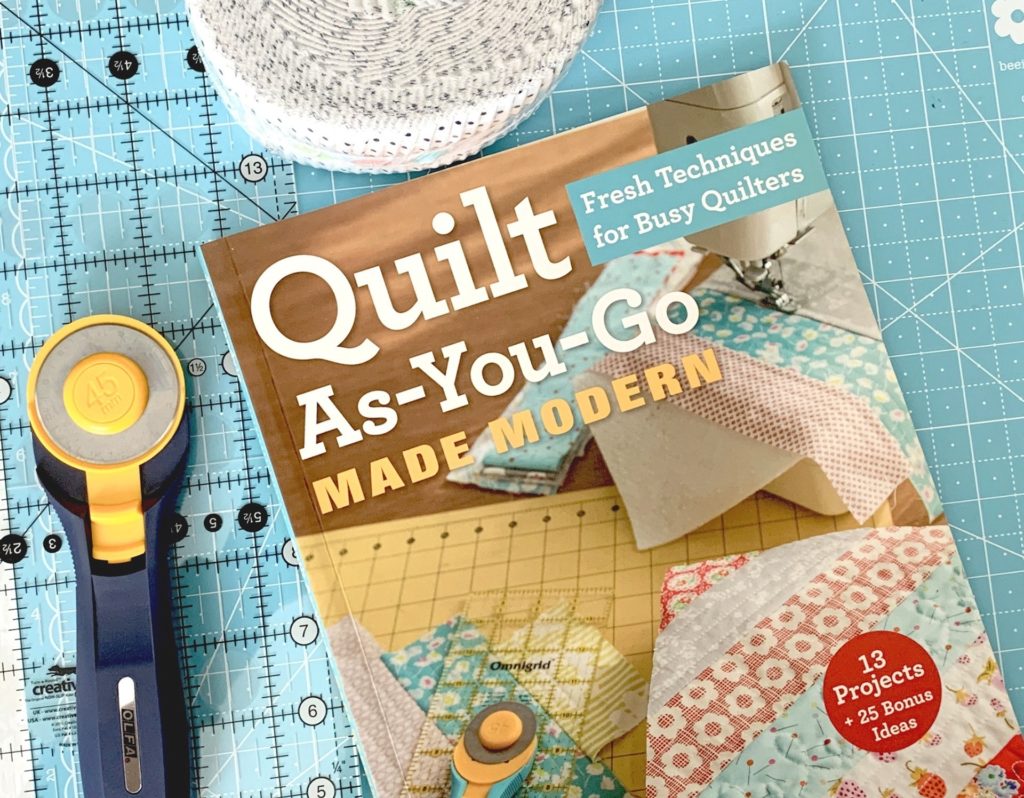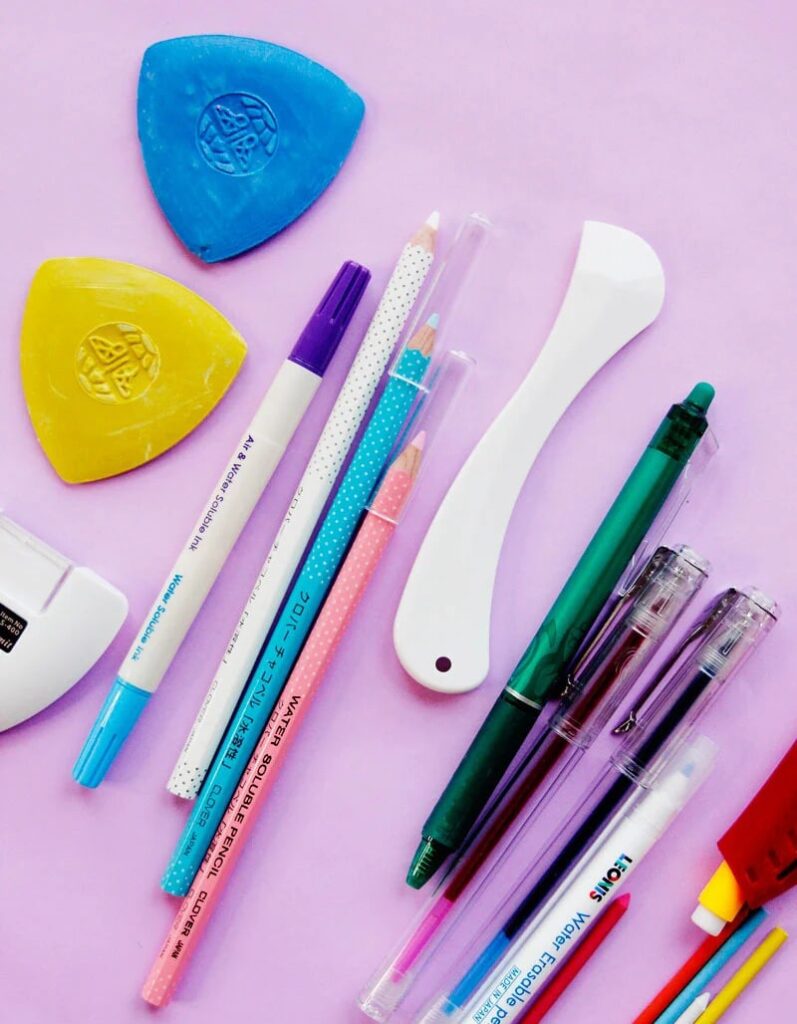

Free motion quilting is a bit confusing because it is so simple yet complex. It allows you to create beautiful designs and patterns on your quilts. As its name suggests, this style of quilting allows you to move the quilt freely in any direction. It gives you creative freedom as you can quilt any shape you want from curves and circles to straight lines and squares. You also get to minimize the number of times you have to move and shift a large quilt on your sewing machine. Therefore, it is perfect for those who have a small sewing machine and work on large projects every now and then.
Free motion quilting can be done on a home machine or a long-arm quilting machine. The only must-have is a darning foot Trusted Source How to use the Darning / Embroidery / Pogo Foot - Singer The Darning / Embroidery / Pogo Foot can be used for free-motion quilting, thread painting, monograms, and even for repairing torn areas. This foot is one of the most versatile sewing accessories in your sewing room. The Darning / Embroidery / Pogo Foot has a small opening through which the needle… singerco.com.au or a free motion quilting foot. The special foot allows you to hover all over the surface of your quilt in any direction. As intimidating as free motion quilting sounds, anyone can do it with the right tools. Let’s take a closer look at what the process entails.
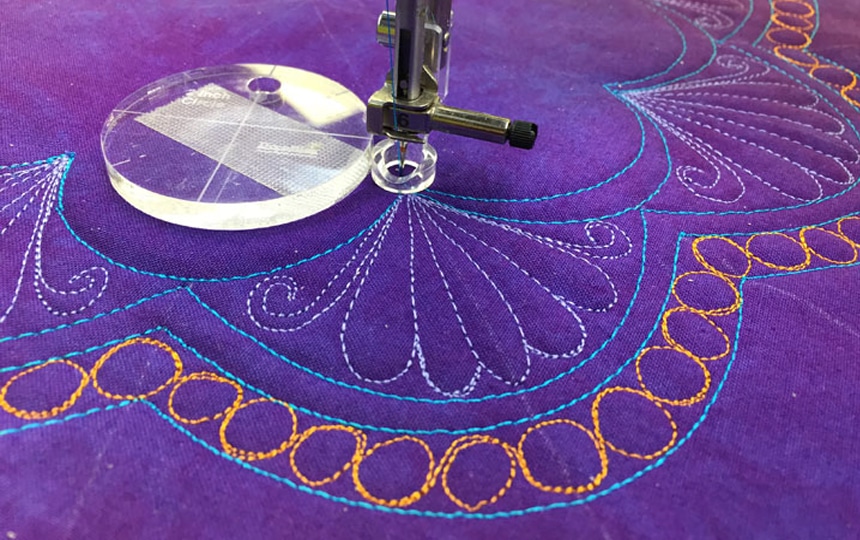
Free motion quilting is a quilting style that requires you to move your quilt in all directions as you create beautiful designs and patterns all over its surface. To free motion quilt, you need a darning foot or a free motion foot that is compatible with your sewing machine.
Your sewing machine has to lower its feed dogs to avoid any resistance or pushing of the fabric. The feed dogs are the little teeth under the presser foot that continuously feed your quilt forward and space your stitches evenly. Once you have securely attached your free motion foot and the feed dogs are lowered, you have total control over the stitching and the fabric. Also, your machine won’t give you any resistance, so you can move your quilt freely in all directions.
Free motion quilting has its own challenges which are created by the nature of the quilting style. Since you are required not to use the feed dogs, you will be forced to control the length and appearance of your stitches by balancing the movement of your hands and controlling the speed of your machine with the foot pedal.
This is why most beginner dread free motion quilting. Before mastering the skill, free motion quilting can be daunting as you are expected to move the quilt and create beautiful designs while controlling the speed of the machine at the same time.
As a beginner, your first free motion quilting is likely to be ugly, and it’s perfectly normal. With time, you will learn how to position your hands and match the movement of the quilt to your machine’s speed.
Some of the key tools and materials you will need for the free motion quilting include:
Darning foot – This is also commonly known as open-toe foot. It features a spring on the base to allow it to travel freely in all directions during free motion quilting.
Walking foot – All sewing machine have feed dogs which are little teeth beneath the presser foot that feed the quilt continuously and distribute the stitches evenly. Free motion quilting doesn’t use feed dogs. A walking foot acts like a feed dog on top of the quilt, allowing its even distribution.
Basted quilt – Your quilt should be well basted before you begin free motion quilting. Here Trusted Source How to baste a quilt - The Sewing Directory Learn to different methods to baste a quilt – joining the 3 layers of your quilt together ready for quilting. Beginners guide from Kerry Green. www.thesewingdirectory.co.uk is how to baste a quilt properly if you are completely unfamiliar with the process. Pro tip: The most convenient basting method is spray basting because you don’t have to stop and start countless times when removing pins.
Doodle paper and pen – These are for drawing your patterns or designs before you begin quilting. If you practice drawing the design by hand before executing it on the project, you mind and hand get used to it. It’s called muscle memory. You will notice how fluid the design will flow once the quilt is under the needle.
Quilting gloves – Believe it or not gloves will increase the maneuverability of the quilt under the needle. The Machingers Quilting Gloves for Free-Motion Sewing is one of the most popular sewing and quilting gloves out there. The gloves have all praise by expert reviewers because of their fully coated fingertips that offer excellent grip with zero resistance and drag on fabric. Also they are made of nylon, so thread doesn’t stick on them and you can wear them for hours on end without discomfort.
Quilt table – This is an extension that gives you an easier time especially when working on large quilts. With a quilt table, your left hand will be at the same height as your right hand when guiding your quilt through the sewing machine. Not all machines come with a quilt table, especially ones not specially designed for quilting.
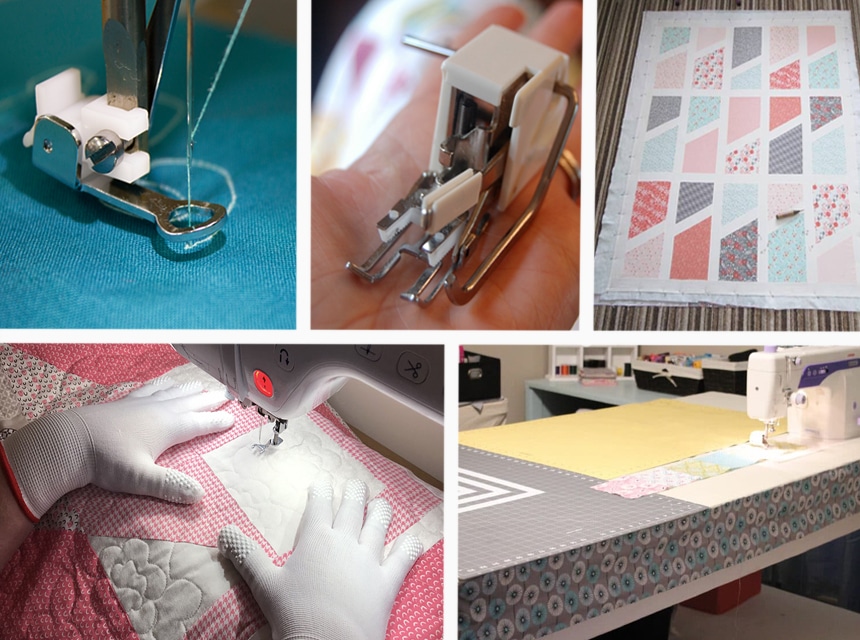
Here’s how to free motion quilt:
Securely attach a darning foot or a free motion foot. Ensure you have some extra bobbins just in case you run out in the middle of your project. Also the quilt should be a well basted sandwich before you start working on it. If it’s your first time to free motion quilt, make lots of smaller basted quilts for practice.
Lower the feed dogs on your sewing machine then turn down the stitch length to zero. If your sewing machine has a speed control, ensure it’s at the fastest setting before you start. You can use a pair of gloves if you find that you have a hard time holding the quilt and moving it while quilting.

Choose the design or patterns you want before you start quilting. You can do this with a pencil on paper first, or if you trust yourself, just wing it.
Start stitching. Try to speed up and relax to avoid having a hard time keeping the design fluid. Otherwise, you will have sharp points and turn. If you bobbin thread runs out in the middle of the process, simply cut the thread and refill the bobbin. Start stitching a few stitches from where you stopped. Stitch back and forth to secure the thread then continue stitching.
That’s it! That’s all it takes to free motion quilt. Working on a large quilt is more challenging because you have to hold it on your shoulders and squeeze it through the machine as you control the speed and create beautiful designs at the same time. However, if you invest in the best sewing machine for free motion quilting, you will never have tension problems and other small annoying issues. Also, practice makes perfect.
According to most reviews, the Juki HZL-F600 Computerized Sewing and Quilting Machine is one of the best machines you can get for quilting out there. It is incredibly easy to use, thanks to its intuitive LCD screen and automatic needle threader. It also comes with tons of accessories that make it highly versatile. You can use it for a wide range of day to day sewing and quilting projects.
Here are some quick tips that will help you achieve stellar results and have a smooth free motion quilting experience:
If you have a domestic sewing machine, be sure to get a table that sits flush with the machine’s drop-in table. Without a table, it’s inevitable that gravity will pull down your large and heavy quilt down to the floor, and this will interfere with the quality of stitches. The extra table will prevent the drag and give you control of the quilt’s bulk.
You must consider your thread colors when threading your machine. Unless your machine has really perfect tension, you are likely to see dots of bobbin thread showing on the top of your quilt. This is why you want to make sure the threads match the top and bobbin of your machine. The fiber content and weight of the threads don’t matter as much, just ensure the colors match.
There is no way you can easily spot less-than-perfect mistakes on a multi-colored busy fabric print. All you will see is the texture of the fabric. Also a thin polyester or cotton thread in a color that matches the top of your quilt will help you avoid a thread look.

Free motion quilting needs a lot of practice before mastery. As a beginner, you might be tempted to start off with large quilts. Your first free motion quilts are not going to be the prettiest. Therefore, it helps to make practice samples. You can use 10-inch scraps of fabric with batting in between.
Create different designs and play with a variety of thread combinations and batting types. Keep the practice samples to use for reference and take notes along the way. When you feel you are ready, based on your results, you can start with a small project like a baby quilt or table runner.
Also, ensure you do all your quilts yourself. Many quilters have the habit of piecing then outsourcing the quilting to someone else. If you make a habit of piecing and machine quilting yourself, your skills will get better with every single quilt you finish.
As a beginner, you want to go for simple designs until you become a pro. As a beginner, it is highly likely that your first skill will have a simple design with either large squares, pre-cuts, or strip piecing. Choose a simple free motion design to complement it like straight lines, swirly or stipple designs.
The best way to go about this is to take pictures of your quilt top or sketch it using a quilt design software on the computer then draw your free motion quilting design on the printed paper before you start quilting. They will act like your free motion quilting templates and will give you a chance to see how all the design ideas you have will look on the pieced top. You’ll also be able to figure out where you need to move across the quilt while quilting.
Having a lot of texture in the quilt’s background gives it an intricate sophisticated look yet it is something so easy to achieve. The simple rule to this is asymmetry and variety.
Free motion quilting is a quilting style dreaded by many quilters. It sounds intimidating but with the right tools and materials, anyone can successfully free motion quilt. You just need to invest in the best sewing machine then do a little practice and you’ll be good to work on any kind of project. Most importantly, you need to develop the can-do attitude. When you get the hang of it, you will enjoy it.
There are other alternatives to free motion quilting like walking-foot quilting which are less complicated. However, you can make a variety of creative intricate designs and patterns on your quilts with the free motion quilting technique faster. It takes a bit more time to practice, but is worth every moment and effort.

